Madame President: Marguerite Norris
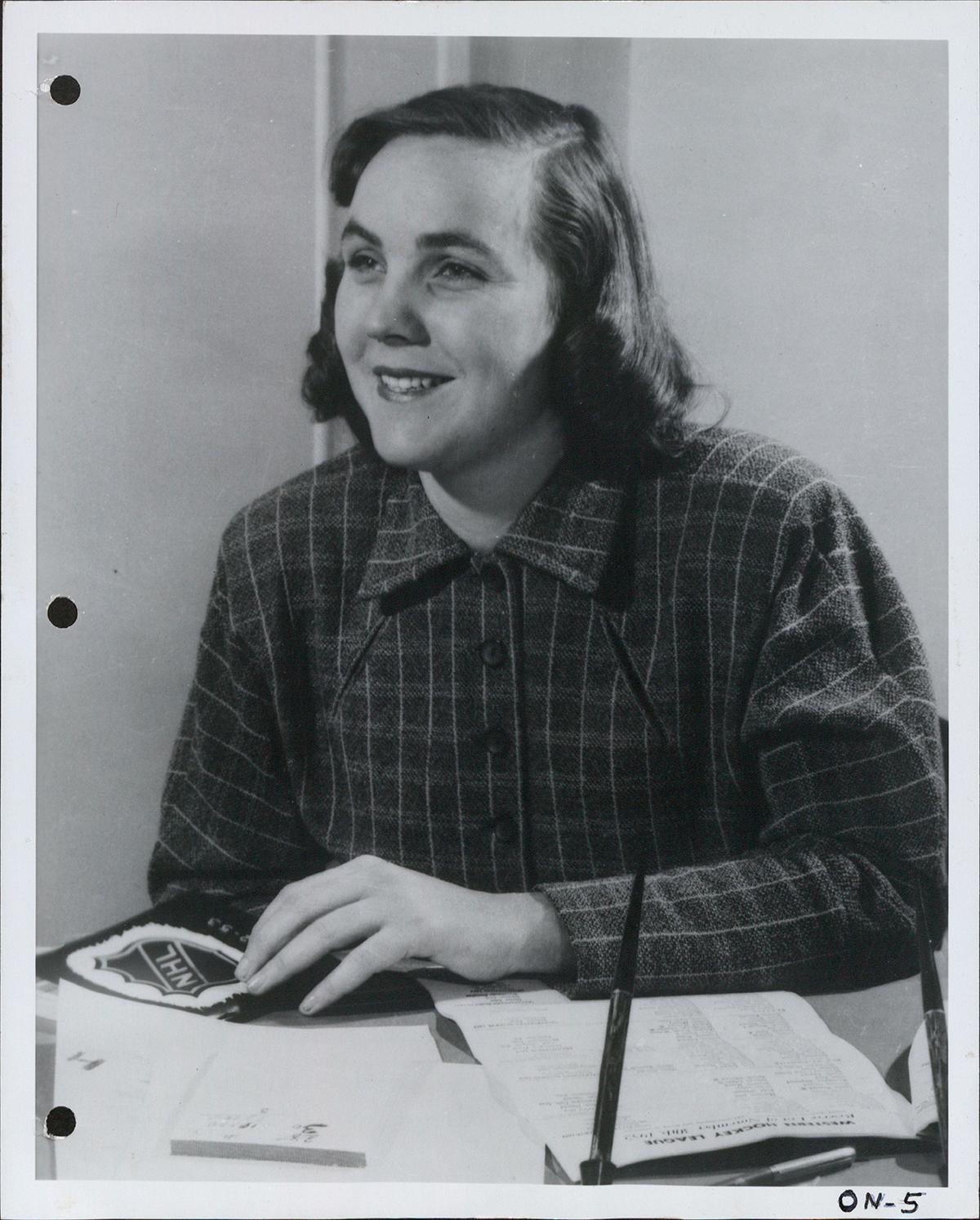
Marguerite Norris, circa 1950s. Credit: Photograph source unknown. Image provided courtesy of Detroit Red Wings.
Marguerite Ann Norris was no stranger to hockey. Growing up in a hockey environment, she was often made goaltender for her three older brothers to practice against. "Since I was the youngest of the kids, I was left with no choice: I had to be goalie," Norris said to the Associated Press in 1952. "I was the target, and it was a while before I found out that goalies wear shin pads. They never told me!"
She was a graduate of Smith College in Massachusetts and received training at Dun & Bradstreet, a business consulting firm based in New England at the time. With her keen business acumen, she learned the ins and outs of the hockey world from her father, James E. Norris. In 1932, James Norris purchased the Detroit Falcons, changed their name to the Red Wings, and brought the franchise to solid financial ground.
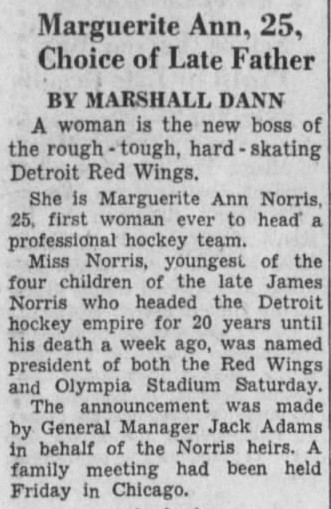
Excerpt from the Detroit Free Press article "Norris' Daughter Wings' New President," December 14, 1952.
After her father died in December 1952, 25-year-old Marguerite Norris became president of the Detroit Red Wings. General Manager Jack Adams announced that Norris was selected by her father prior to his death to succeed him as president, making her the first female chief executive in the history of the National Hockey League (NHL).
In her first meeting with the press, she was surrounded by hockey reporters, fashion reporters, and photographers. On December 15, 1952, in Norris' first game as president, the Red Wings played against the Montreal Canadiens. Montreal's Maurice Richard, who had a firm policy of not "fraternizing with the enemy," was selected by his head coach to present Norris with flowers before the game. Years later, Elmer Lach, Richard's teammate, recalled that "after making the presentation, [Richard] was so mad that he got six minor penalties in the first period alone."
Shortly after her takeover, reports emerged that Olympia Stadium, the home of the Red Wings, was cleaner and freshly painted. A wire screen was put in place to protect fans from flying pucks. Throughout her tenure, Norris also advocated for arenas to be more female fan friendly.
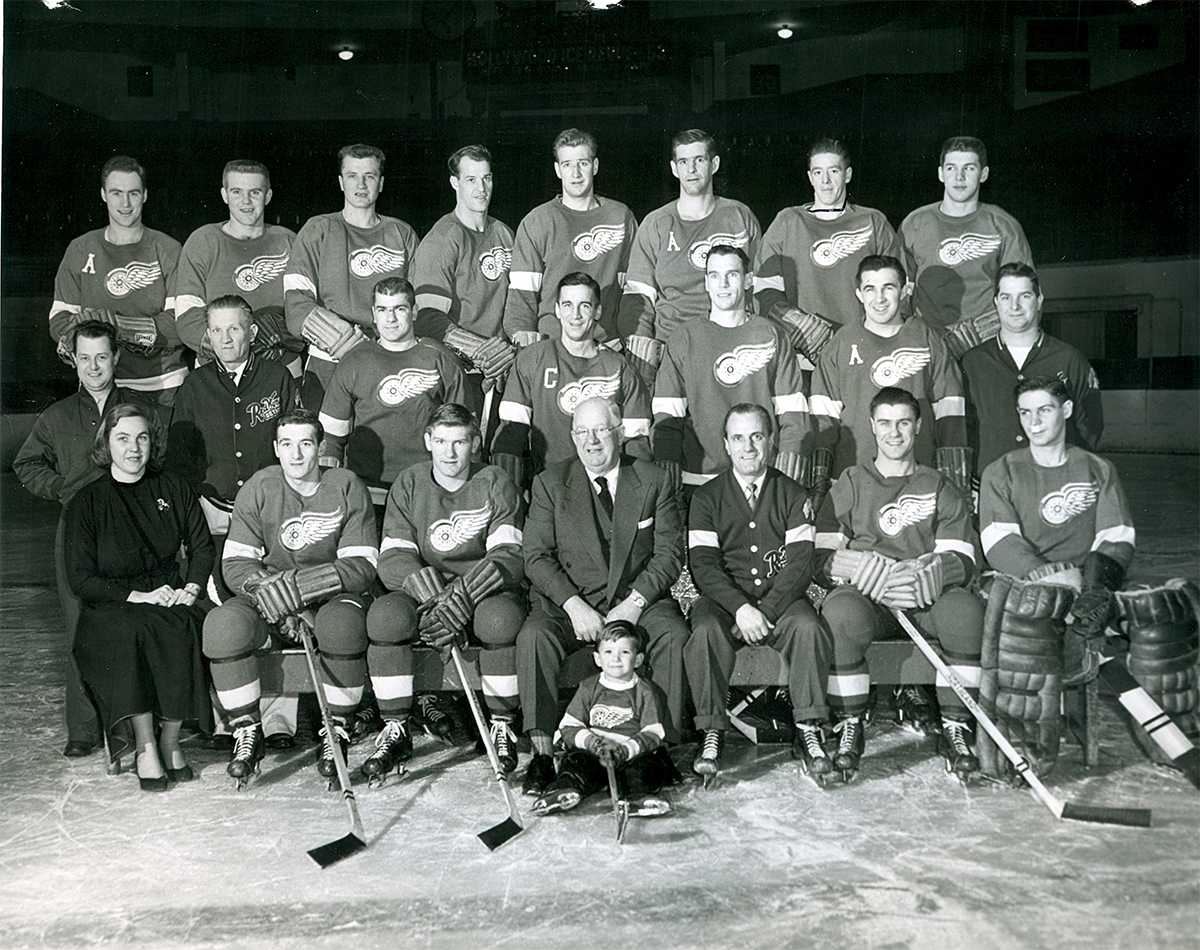
Marguerite Norris (first row, far left) with the 1952-53 Detroit Red Wings. Notable players pictured include Gordie Howe (back row, fourth from left), Captain Ted Lindsay (middle row center), General Manager Jack Adams (front row, center), and goaltender Terry Sawchuk (front row, far right). Credit: Photograph source unknown. Image provided courtesy of Detroit Red Wings.
During her tenure with the Red Wings, Norris saw the team finish first in the league three consecutive seasons and win the Stanley Cup in 1954 and 1955 — the team's sixth and seventh championships. As per custom, alongside the names of the players, coaches, and managers, the winning team's president also gets their name engraved on the Stanley Cup. The 1954 championship made Norris the first woman to ever have her name engraved on the Stanley Cup.
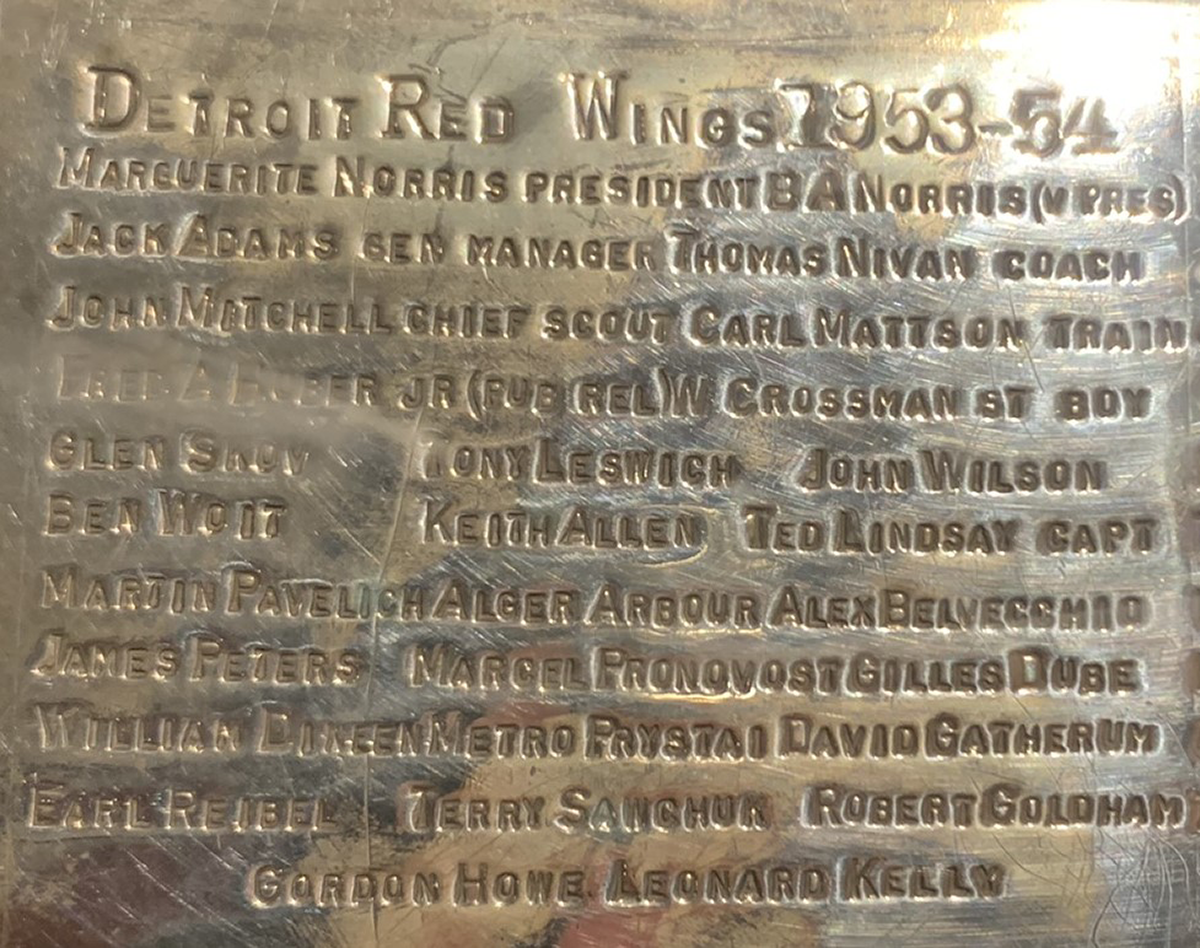
1953-54 Stanley Cup ring featuring Marguerite Norris' name first on the second line. Photograph courtesy of author.
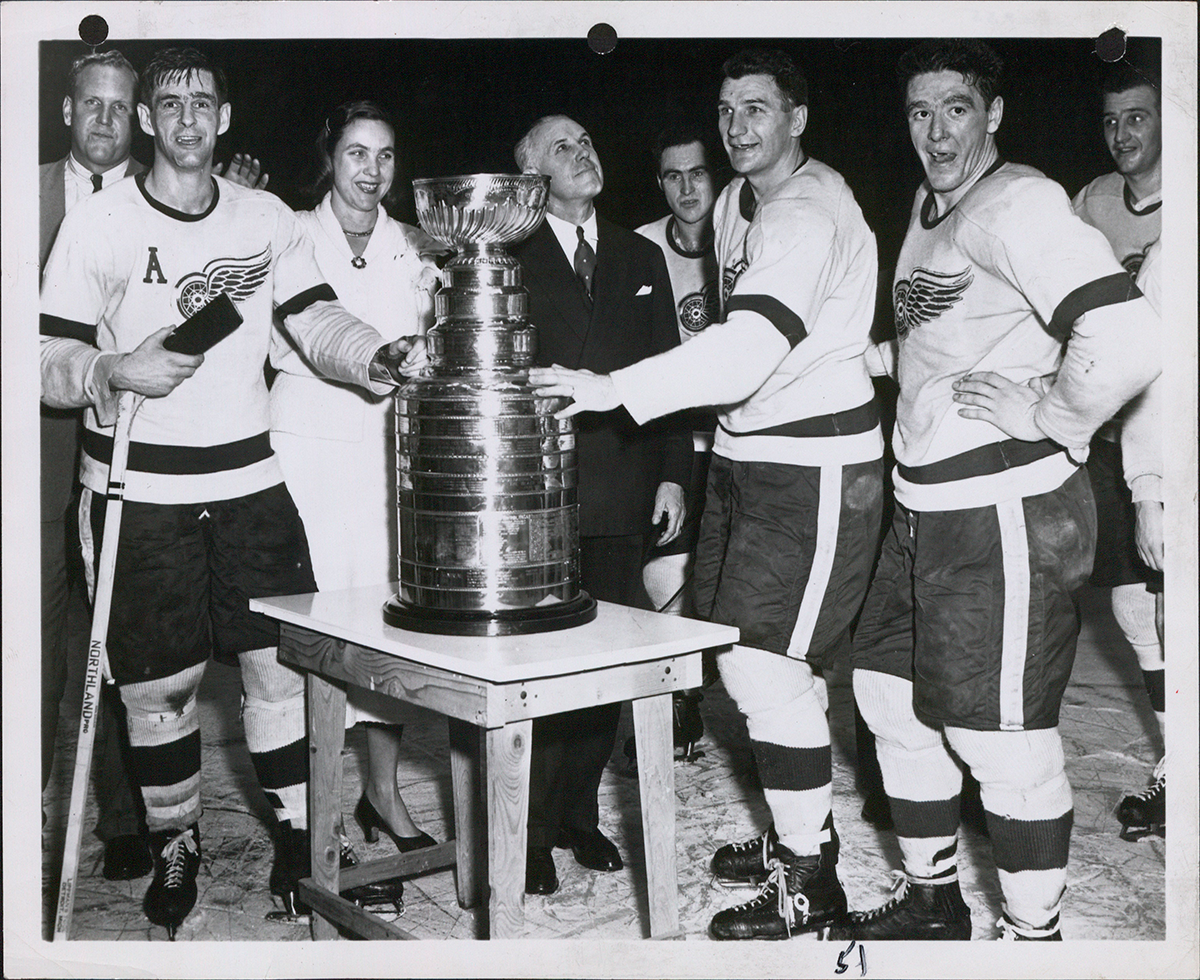
The 1953-54 Detroit Red Wings celebrating their Stanley Cup win. Marguerite Norris is pictured on the ice with the team, to the left of the Cup. Credit: Photograph source Foremost. Image provided courtesy of Detroit Red Wings.
Despite her success, Norris still faced significant discrimination. She was forbidden to serve on the NHL Board of Governors by Conn Smythe, then-principal owner of the Toronto Maple Leafs. The Board of Governors, the ruling and governing body of the NHL, exists to establish the policies of the League and to uphold its constitution. Each team appoints a governor to serve as a representative. In her place, General Manager Jack Adams represented the Red Wings with Norris secretly voting through him using a series of hand gestures.
Although Adams was more than willing to serve as Norris' proxy, he often resented working for her. In his 2016 book, The Red Kelly Story, former Red Wings forward Red Kelly said, "I don't think Jack Adams liked having to answer to a woman, quite frankly…I'm sure he thought women shouldn't be in an executive position in hockey, especially his hockey team. Marguerite was more than capable in our eyes. She was a great lady."
Following the Stanley Cup win in 1955, Norris' brother Bruce Norris appointed himself as team president and demoted her to vice president. In his 2014 autobiography Mr. Hockey: My Story, hockey legend Gordie Howe said, "I found her to be both smart and capable. Others I talked to felt the same way. She was good for the club, but unfortunately she didn't stick around for as long as anyone would have liked. I don't think it's a coincidence that Marguerite's time in charge coincided with some of the greatest years in franchise history…It's hard to say how many Stanley Cups we might have won if she had stuck around longer."
Howe continued to say that Bruce Norris' hockey acumen was "no match for his sister's," and Red Kelly echoed Howe's sentiments stating, "Marguerite was great as far as we were concerned. She treated us very well…There was never any doubt that she always appreciated our effort on the ice and never hesitated to tell us so, even when we lost."
A few days after the change in presidency, Adams had all but dismantled the 1955 championship team, trading away eight players who had formed its core. The Red Wings would not win another Stanley Cup for 42 years.
Though she clearly loved hockey and the Red Wings, Norris served as president for only three seasons. Following her departure from the team, she focused on business interests in New York City. On October 26, 1960, Norris married John J. Riker in New York. Together they had four children — two daughters and two sons. They co-owned the Westenhook Farm, now Willow Creek Farm, a renowned equestrian farm in Southbury, Connecticut.
Norris died at age 67, in 1994, at her Connecticut home. Today her legend continues, inspiring women and girls around the world that hockey is, indeed, for everyone.
Don't miss the HOCKEY: Faster Than Ever exhibition at Henry Ford Museum of American Innovation now through January 5, 2025.
Written by Cory Nummer, Curator, Curation & Collections, Ilitch Companies.

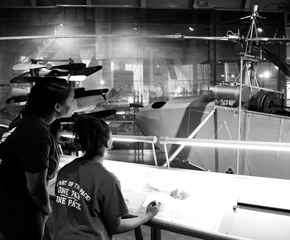
Facebook Comments